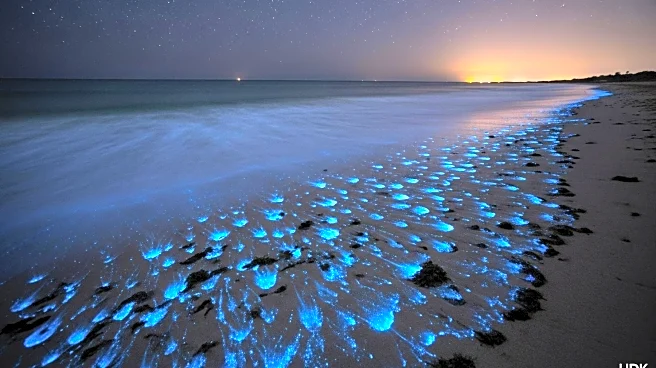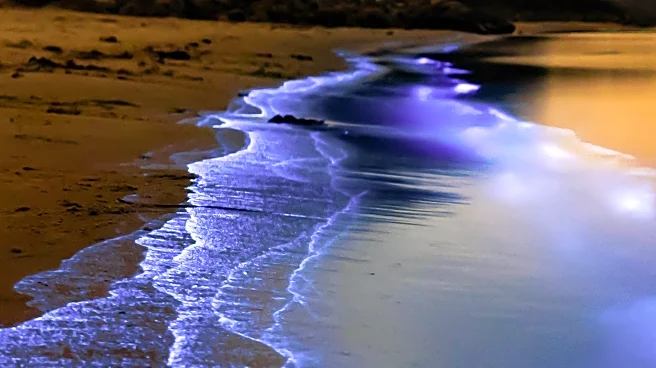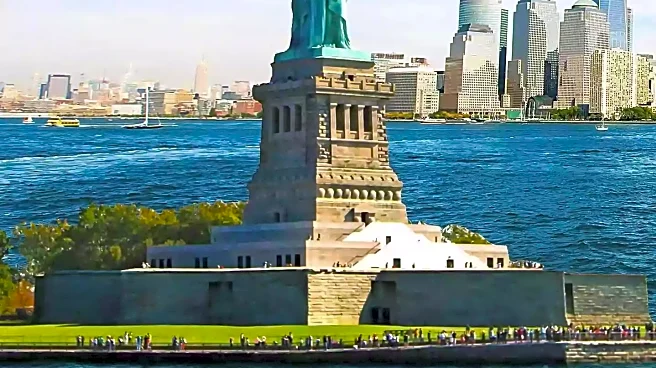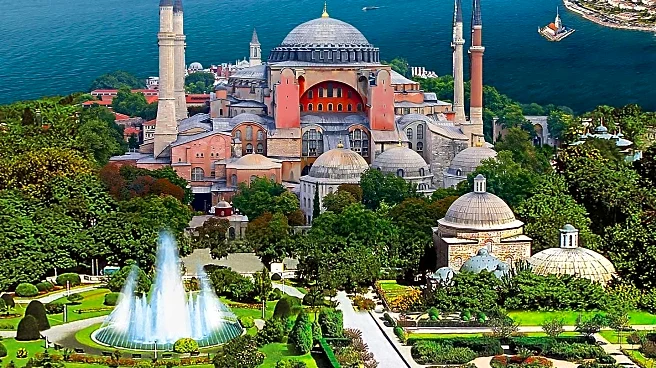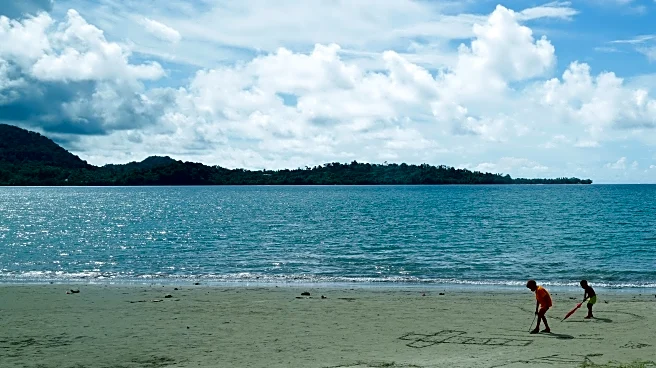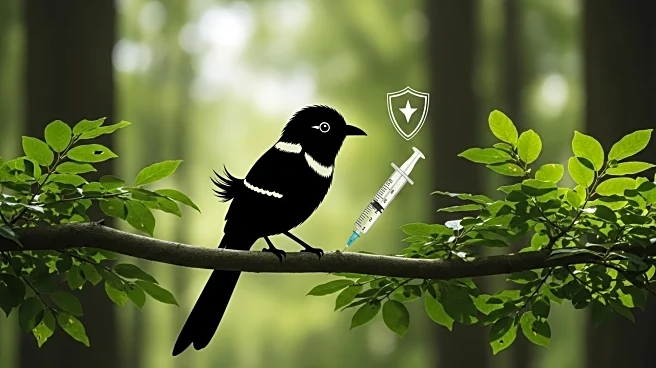What's Happening?
St. Kilda Beach in Melbourne, Australia, is experiencing a natural phenomenon where bioluminescent algae, known as Nocticula scintillan or 'sea sparkle,' are creating a mesmerizing electric blue glow at night. The algae emit light when disturbed, serving as a defense mechanism against predators. While not toxic to humans, the algae can be harmful to fish due to their high ammonia content and ability to deplete oxygen levels. The occurrence has attracted hundreds of visitors, eager to witness the rare spectacle.
Why It's Important?
The increased frequency and intensity of bioluminescent algal blooms are linked to warming ocean temperatures, which can indicate environmental stress. These blooms can impact marine ecosystems, particularly fisheries, due to their potential to disrupt oxygen levels. The phenomenon underscores the broader implications of climate change on ocean health and biodiversity. It also highlights the growing interest in natural attractions, which can boost local tourism but also raise concerns about environmental preservation.
Beyond the Headlines
The bioluminescent algae serve as a reminder of the delicate balance within marine ecosystems and the potential consequences of climate change. As ocean temperatures rise, the conditions favoring such blooms may become more common, posing challenges for marine life and industries reliant on healthy ocean environments. The event also raises awareness about the need for sustainable tourism practices to protect natural wonders.
